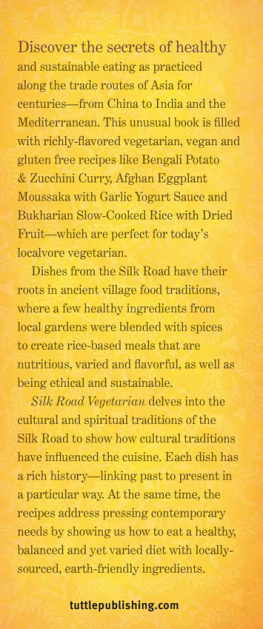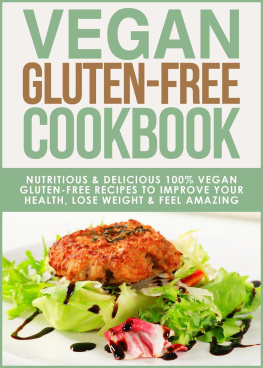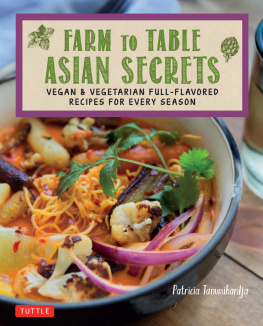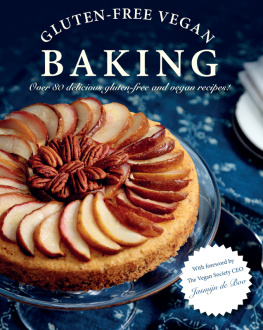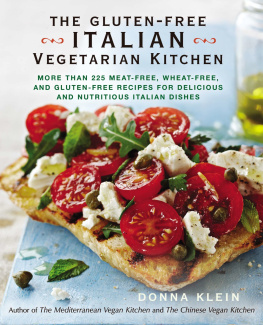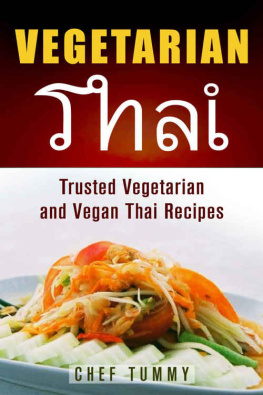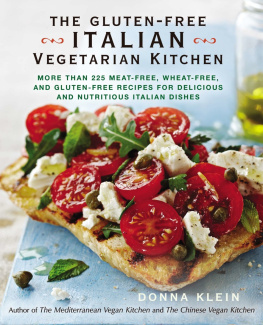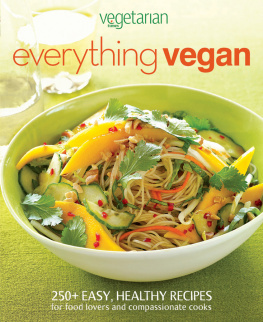Acknowledgments
Writing a cookbook is a group effort, and I would like to extend my deepest appreciation to everyone that encouraged me to actualize this book.
Thank you to my smart, savvy, and very patient editor, Karen Berman. I knew when I first spoke to her that she was the perfect match for this book. Karen not only took on the huge job of editing a first-time writer, but she was also enthusiastic about my project. She managed to capture the essence of my ancestry, traveling on a caravan with me through the Silk Road and back to the West. You wore the hat of many people throughout this project: advisor, organizer, and editor. Without your invaluable input and stringing my thoughts together in a fluid way, this project would not have come to fruition.
A very special thank you to P.M. Through you, I found a way to integrate the disparate parts of myself into wholesome and satisfying dishes. It was your encouragement that led me to publish this book professionally.
Thanks to Jennifer Jagusak, who photographed some of my dishes in my home. As much care that I put into cooking my dishes, you took in photographing them to perfection. You can always find her at www.jenniferjagusak.com
My lovely niece Daniella came to my rescue when I needed more photos for this book. You rock, Dani!
Thank you to my family, friends, and community, who all encouraged me to write this book. I was blessed to have many supportive people tell me how important this cookbook is to my Central Asian ancestry. My mother, Zina was instrumental in many of these ancient dishes, always providing her input in how to translate some of these meat dishes into vegetarian. Mom, you are a true artist who has an uncanny ability to make even water taste like champagne. Before sustainability was even in vogue, you always utilized every single part of a fruit or vegetable to make multiple dishes. I am amazed at your creativity and intuition. Your openness to other cultures has transfused itself into my being, my home, and my cooking.
Thank you to my recipe testers and friends; P.M., Alice Merwin, Suzette Diamond, Lea Ruben, and Evelyn Benetar, who also lent me her grandmothers fine china to photograph with some of my dishes.
I am blessed with great in-laws in South Africa. The minute I said I wanted to produce this cookbook, my mother-in-law, Shirley Klein, and sister-in-law, Janine Solarsh sent me countless recipes (written by hand) to experiment with. Your support throughout the process was more than I had ever expected. Thank you for increasing my culinary repertoire.
The Tuttle team did a fabulous job in producing a beautifully rich cookbook that can sit front and center on anyones coffee table, but hopefully it will sit on the kitchen counter more! Thanks Jon Steever for being my ambassador to the Tuttle team, ensuring that this book met my vision. You all exceeded my expectations.
Last, but not at all least, is my husband, Mervin. You have supported this project of mine and lent me your loving hands for my photography sessions and your stomach for my experimentation.
After reading this manuscript hundreds of times, and wondering to myself how I ever managed to put together a cookbook that looked and sounded so goodI am not a writer, nor a photographer (and quite frankly I am not even a chef!)I have to thank God who graced me with the words, stamina, and creativity to produce this book.
I welcome your comments on this cookbook or any other queries. You can find me at: silkroadvegetarian.com.
Basic Preparation
The trick with tofu is to buy the variety suited to the dish you are preparing. Then you simply press out the water and marinate it. Once you have these steps down, you are sure to make a fabulous tofu dish. Tofu needs to be marinated, but avoid using marinades containing oil, which blocks absorption. Marinated tofu is a snap to prepare on an oiled grill, in a grill pan or under the broiler.
Tofu
Tofu, also known as bean curd, is a protein-rich food that is made from the curds of soybean milk. Off-white in color, it is usually sold in rectangular blocks. Tofu is a staple in the cuisines of many Asian countries.
Tofu comes in a range of consistencies that can suit a variety of different recipes. It is available in either the traditional Chinese block form or the silken Japanese form, which has a custard-like texture. Both forms can be found in soft, firm or extra-firm textures. The soft tofu has a smoother texture and is therefore better suited for salad dressings, sauces and desserts, while firm and extra-firm tofu are best for baking, stir-frying, and grilling.
Only buy organic tofu because soybeans are the most genetically modified (GMO) crops in the United States. The dramatic increase in food allergies, obesity, diabetes, and other food-related diseases is thought to be in direct correlation to the introduction of GMO crops and foods. The best option is to buy from a store that makes fresh tofu every day, and if you live in a big city, there is a good chance you will find this type of store. If you dont live near a store that makes fresh tofu, your next best bet is to find a store that does a brisk business selling pre-packaged tofu. You want the tofu packed in a rectangular, water filled box (or maybe wrapped in plastic), from the refrigerator section. If you open the package and smell more than a tiny whiff of sourness, or the tofu feels slimy, it isnt going to give you a good result in your cooking.
Pressed Tofu
Tofu is packed in water, and its a lot like a spongeif you dont press out the old water you cant get any new flavors in. This is really easy; it just takes some advance planning. This procedure assumes the use of waterpacked tofu, not the silken kind in the little boxes. Keep in mind: the firmer the tofu, the less water that can be pressed from it.
Prep Time: 35 minutes
MATERIALS NEEDED FOR PRESSING
Baking pan
Wire rack
Plate
Paper towels


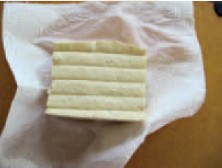
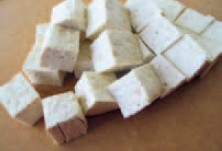
Drain the water from the tofu package.
Place the baking pan on flat surface and the wire rack (which will be used to drain the water from the tofu) on it, positioning the rack perpendicular to the pan.
Place the tofu on top of the rack, and the plate on top of the tofu. Set some heavy objects (like some cookbooks) on top.
Allow the tofu to drain into the pan for 30 minutes.
Dry off the tofu with paper towels. This is an important step, which allows the tofu to brown in the skillet. It will also reduce dangerous and unpleasant sputtering when you put it in the skillet.
Cut the block into however many slices you want. Marinate and cook the slices according to your recipe.
Legumes
Lentils and beans are nutrient powerhouses that come in a diverse range of flavors and textures. Legumes are a staple for many Middle Eastern, South American, Indian, and Mediterranean dishes. However, almost every country has its own way of using of legumes. They are traditionally combined with grains in almost every corner of the globe.

